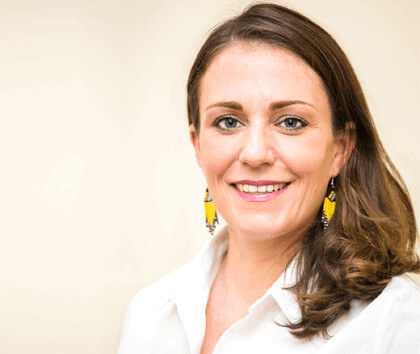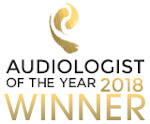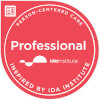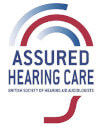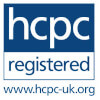The Hearing Knowledge Hub
-
Revealing Churchill’s Hearing Loss
Like many people, as Winston Churchill got older he began to suffer from hearing loss. Records in the government’s archives shed light on this little-known aspect of his life as well as the technology that was installed in the House of Commons chamber to help him work effectively. Churchill was initially reluctant to admit that his hearing was deteriorating and only had his first hearing aid fitted in 1952, some eight years after his hearing loss was first detected. The hearing aid was made by a company owned by Russian engineer Alexander Poliakoff. However in 1953 Poliakoff’s contract was ended because MI5 was concerned that Soviet Russia could bug the…
-
Making space more accessible
In mid-December some 16 ‘AstroAcces’ disability ambassadors took off from Houston, Texas, to test a system that would help to make the physical environment of a space vessel more accessible to people who are blind, deaf or hearing impaired. The ambassadors flew aboard a specially modified Boeing 727 G-FORCE ONE aircraft to test a system created by SonicCloud which might enable improved speech understanding in space. The personalisation software allows the user to tailor audio, delivered through Sony headphones, to their hearing ability. This was a first global mission comprising people from different countries and saw the ambassadors taking part in weightlessness testing. Other experiments looked at how the physical environment aboard…
-
5 Tips for better hearing at Christmas
If it’s your turn to host this Christmas and you have a family member with hearing loss, it’s worth remembering our top tips to help them to hear well, feel included and have a great time. 1. Turn the music off Any background noise, including music, makes it hard for people with hearing loss to follow the conversation so it’s best to turn it off, rather than down. 2. Take a seat Put the person with hearing loss at the centre of the Christmas dinner table so they’re close to as many people as possible. If everyone is mindful of the person’s hearing challenges, then encourage people to speak one…
-
Listen up! Are those headphones safe for your kids?
If you’re lucky this Christmas Day you might be opening a new iPad, gaming console or mobile phone. If that’s the case, or if a child or young person in your life, will be receiving new tech as a present, please ensure you – and they – enjoy using these presents at safe listening levels. Headphones, earphones and earbuds – known as ‘hearables’ – are increasingly used by all of us to listen to our favourite music, films, programmes and podcasts while we’re on the go or even when we’re at home. This obviously introduces the potential for exposure to excessive noise – and therefore hearing damage – if volumes…
-
Can PQQ be the protection we need against hearing loss?
Sensorineural hearing loss – which is caused by damage to the sensitive hair cells that line the inner ear – is one of the most common sensory disorders in humans. It can be the result of wear and tear from age, or it can be noise induced. Unfortunately the hair cells of the inner ear don’t recover once they’re damaged or lost, and there’s currently no effective treatment to recover hearing loss. For years scientists have been searching for a medical breakthrough that will protect against hearing damage or enhance the recovery of damaged hearing, including blood flow-promoting drugs and antioxidants. A new study, published in the journal ‘Nature’ has…
-
A toothy alternative to hearing aids
Apparently prosthetic teeth could make great hearing aids. Vibrations applied to replacements for lost teeth travel well through jawbones to the inner ear, according to research published by the Acoustical Society of America. Researchers want to turn tooth implants into hearing aids by building the electronics that impart sound vibrations into the portion of a false tooth anchored into the jawbone. Researchers applied sound tones to implants, natural teeth and mastoid bones of 38 people with hearing loss and a single dental implant. And for a wide range of frequencies, the volunteers could hear sounds through implants as well as, or better than, through natural teeth or mastoid bones. Front-tooth…
-
Dual Sensory Impairment?
Dual sensory impairment? Recent studies show that when people have both vision and hearing impairment, what’s known as dual sensory impairment (DSI), their risk for dementia increases significantly over having one impairment alone. In fact, a person with DSI has an eight-fold increased risk of dementia, according to a May 2022 study in the Journal of Alzheimer’s Disease Reports. An unknown link The cause of the link between sensory impairments and dementia is still unknown. It’s possible that an underlying problem, such as a problem affecting blood flow to both a person’s brain and ears, might lead to sensory and cognitive impairments. It could also be related to cognitive decline,…
-
Barbie gets hearing aids!
Mattel, makers of Barbie dolls, recently launched the first Barbie doll with hearing aids. The Barbie, which was launched earlier this year in the ‘Fashionista’ range, has hot pink behind-the-ear hearing aids on both ears. Rose Ayling-Ellis, of Strictly Come Dancing fame, worked with the company in the production of the doll. She says, “It’s so cute. Barbie used to be my favourite doll ever, and I used to draw hearing aids on my dolls to make them look like me. So now we’ve got a doll that has a hearing aid. If I’d got given this Barbie when I was a child, I probably would have screamed and got…
-
The power of newborn babies
Newborn babies do nothing but eat, sleep and cry, right? Well, wrong. New research published in Nature Human Behavior has shown that they start tuning into language the moment they’re born. In the study, newborns were played recordings of spoken vowels played backwards and forwards while non-invasive neuroimaging measured changes in their brains. After five hours of exposure the imaging showed that the newborns’ brains started distinguishing between the two sounds, and after two more hours (when the babies mainly slept) the exposure to the vowel contrast triggered a significant brain activity surge. Many expectant parents are told the ‘urban myth’ that babies who are played classical music and poetry in the…
-
Let’s learn British Sign Language
British Sign Language (or BSL) is used by over 150,000 thousand people in the UK, of whom some 87,000 are deaf. However, there are only around 1,000 registered sign language interpreters in this country. Whether you’re looking for a change of career, would like to learn a new skill, or have a friend who uses BSL and you’re keen to learn, there are many online courses you can explore. Did you know there are also various apps to help you get started too? We found this useful list on the National Deaf Children’s Society’s website. Sign BSL: The British Sign Language dictionary where you can learn the basics from a…



